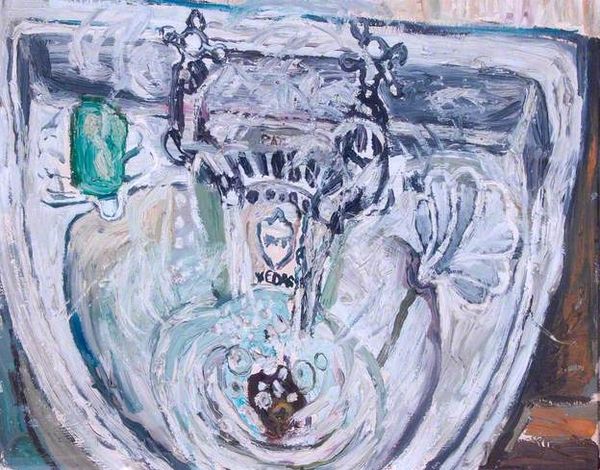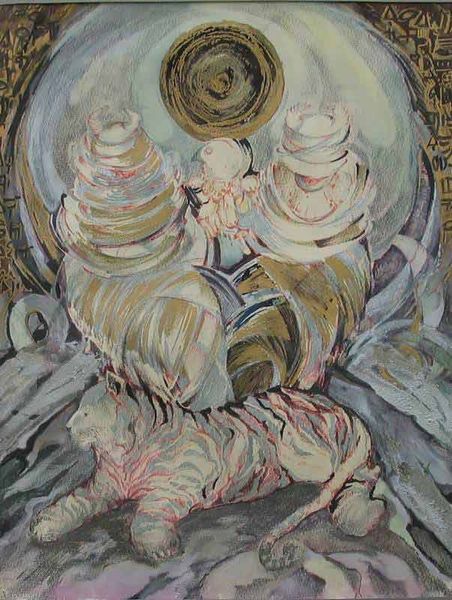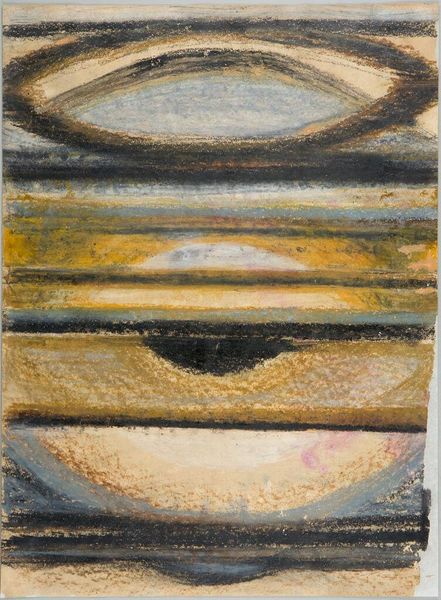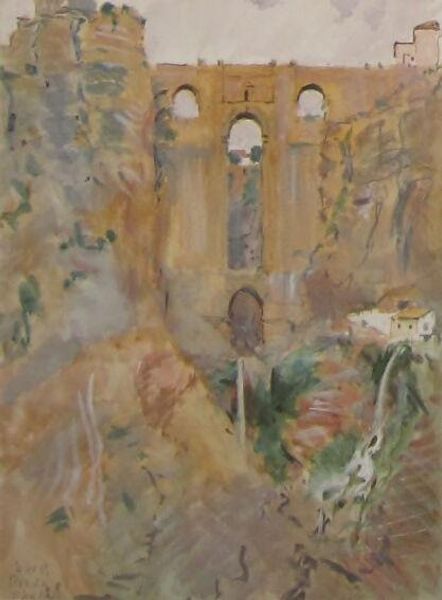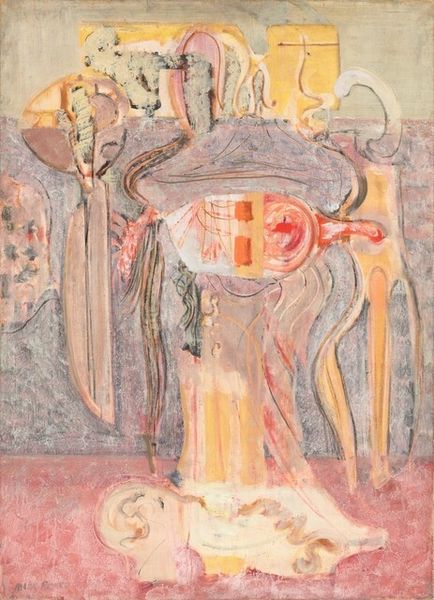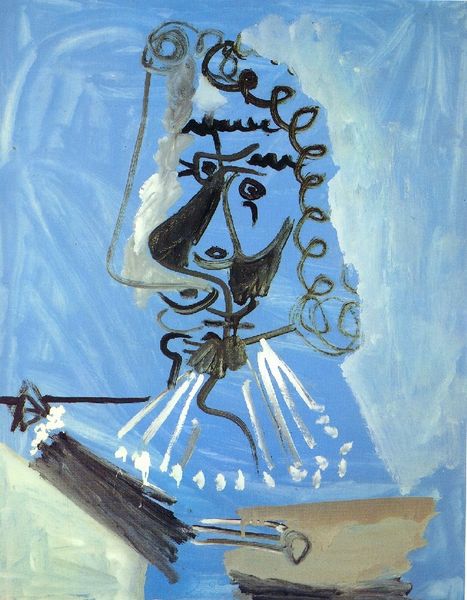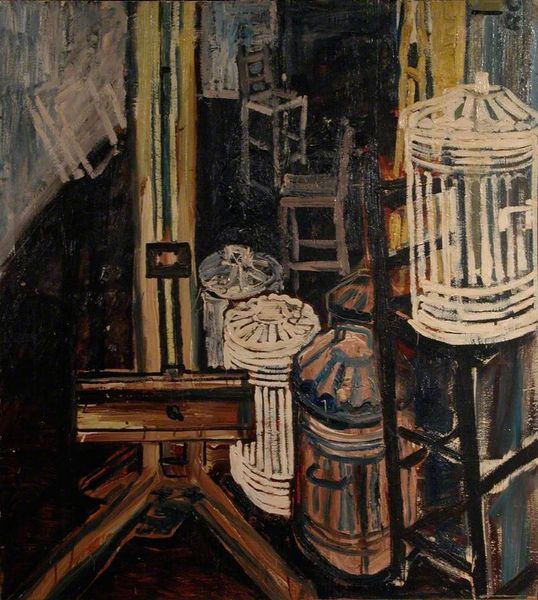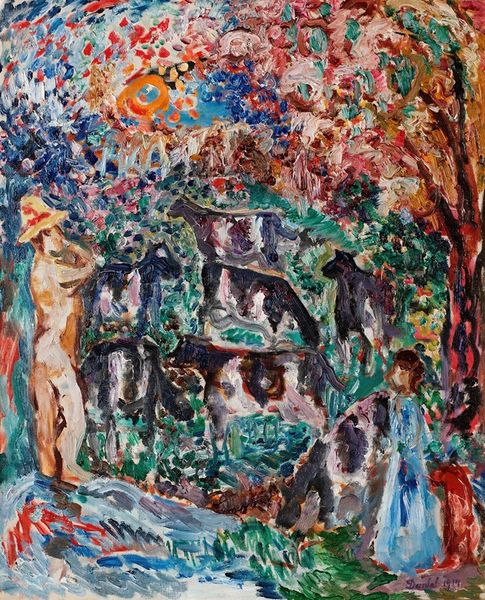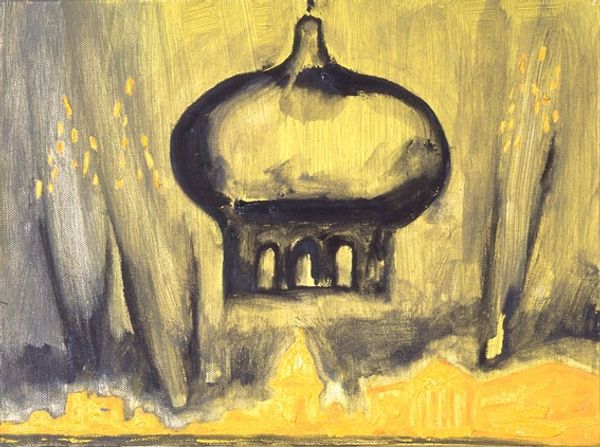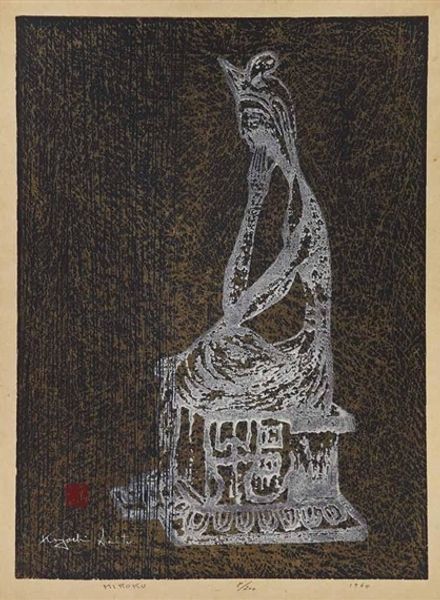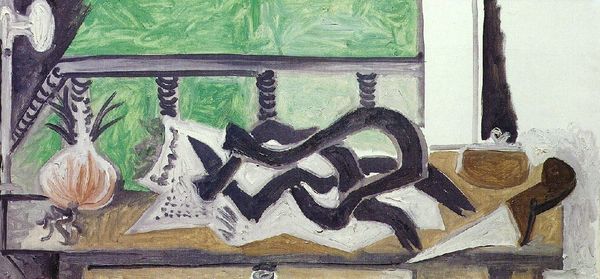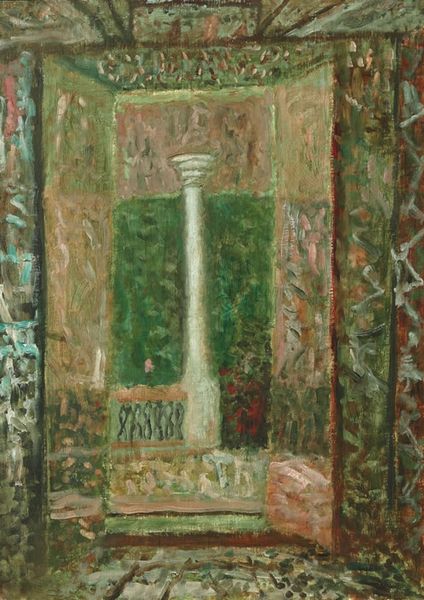
painting, oil-paint
#
kitchen-sink-painters
#
painting
#
oil-paint
#
oil painting
#
realism
Copyright: John Bratby,Fair Use
Curator: Standing before us is "Washbowl," an oil painting created in 1962 by the British artist John Bratby. He's often associated with the Kitchen Sink School, a movement that focused on the mundane and the everyday. Editor: Immediately, I'm struck by the texture—that impasto is almost aggressive. It's not a comforting still life; it feels raw, a bit claustrophobic. There's a lack of obvious aesthetic beauty which is very Kitchen Sink! Curator: Precisely! It’s not about beauty in the traditional sense. It’s about presenting the grit and grime of domestic life. Note the rather iconic central motif of a prominent head atop the fountain fixture, above what appear to be the word 'VEDAS'. I read it as something between iconographic reference and consumer critique! Editor: Right, because in the '50s and '60s, there was a lot of pressure to conform, to create the ideal home, but for many, that reality involved very dull tasks, the constant maintenance of a home which rarely looks "ideal". I’m wondering if the 'Vedas' is some kind of ironic play, since the Vedas contain ancient ideals. Is this fixture the actual god of purity? Curator: Potentially, though his focus on this single detail could also speak to the power that even the most mundane of household objects have in our everyday existence. They’re not neutral. We project meaning onto them, especially regarding our cleanliness and care. Bratby turns a rather banal piece of hardware into something more unsettling. Editor: Yes, because cleanliness is political. Think about access to water, hygiene as a marker of class, or even the concept of "purity" being historically weaponized against marginalized groups. So, depicting this seemingly benign object in this way is a rather shrewd commentary on British domesticity in the period. It does more than record its moment. It exposes certain unacknowledged aspects of power at work behind our washbowls. Curator: In the context of a religious iconography, water, basins and washing rites bear very old meanings around initiation, transition, atonement and, generally, change of state. In a secular modern world we tend to miss that older symbolic weight. Editor: It certainly feels loaded. The more I look, the more discomfort I feel, almost like I am intruding on something private and messy. I think this piece functions not just as observation, but as a challenging disruption of bourgeois values of the era. Curator: Indeed. He’s making us see the world, and even this small detail, anew, layered with symbolic weight, and forcing us to confront our own assumptions. Editor: Agreed. Bratby pushes us to reconsider our perspectives and consider a common scene as complex, personal, and charged with political meaning.
Comments
No comments
Be the first to comment and join the conversation on the ultimate creative platform.
